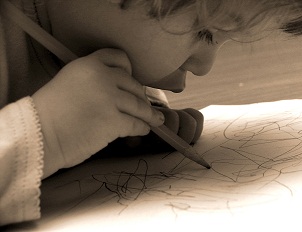
Here is a really good overview of creativity by Michele and Robert Root-Bernstein entitled, “(Almost) Everything You Ever Wanted to Know About Creativity.” The article includes a basic definition of what it means to be creative, goes on to explain the way creative people think, and concludes with what you can do to improve your own creativity. For anyone looking for a basic overview of creativity and the creative process, this is a good place to start:
Creative people tend to utilize a wide range of thinking skills. In our book, Sparks of Genius, we identify thirteen “thinking tools” common to creative people across many disciplines and endeavors. These are observing, abstracting, imaging, pattern recognition, pattern forming, analogizing, body thinking, empathizing, dimensional thinking, modeling, playing, transforming, and synthesizing. It may seem odd, but scientists and artists of all kinds abstract and simplify complex things and processes, play with their ideas, and empathize with the objects of their study in similar ways.
We have another book in the works that will describe additional strategies for thinking that are common to creative people. One is that creative people practice creating. They pursue multiple hobbies or avocations such as painting, music-making, writing, dancing, cooking, modeling, making clothes, and so forth, in which they can play around with and get comfortable with the creative process. Because the creative process is largely transferable from one discipline or endeavor to another, this creative play can have beneficial effects on professional (vocational) work.
In fact, a by-product of having many creative avocations is that creative people have a wider range of knowledge, experience, skills, and techniques to mix and match in novel, interesting and unexpectedly useful ways. So creativity breeds more creativity.”
For the Root-Bernstein’s full article, click here.